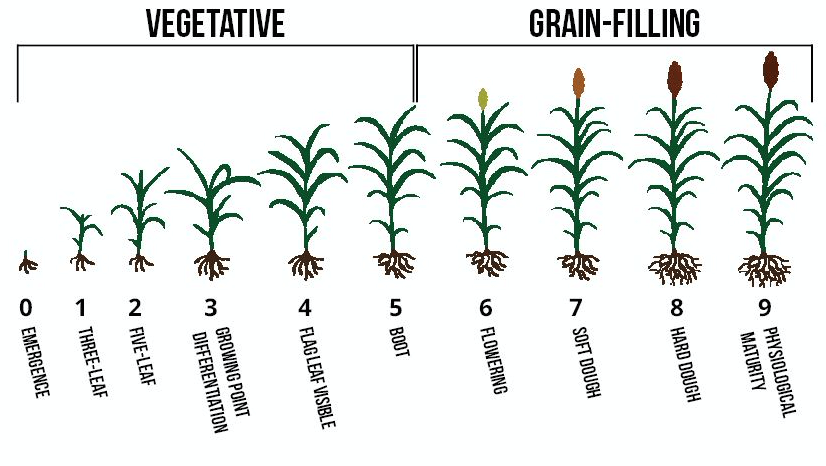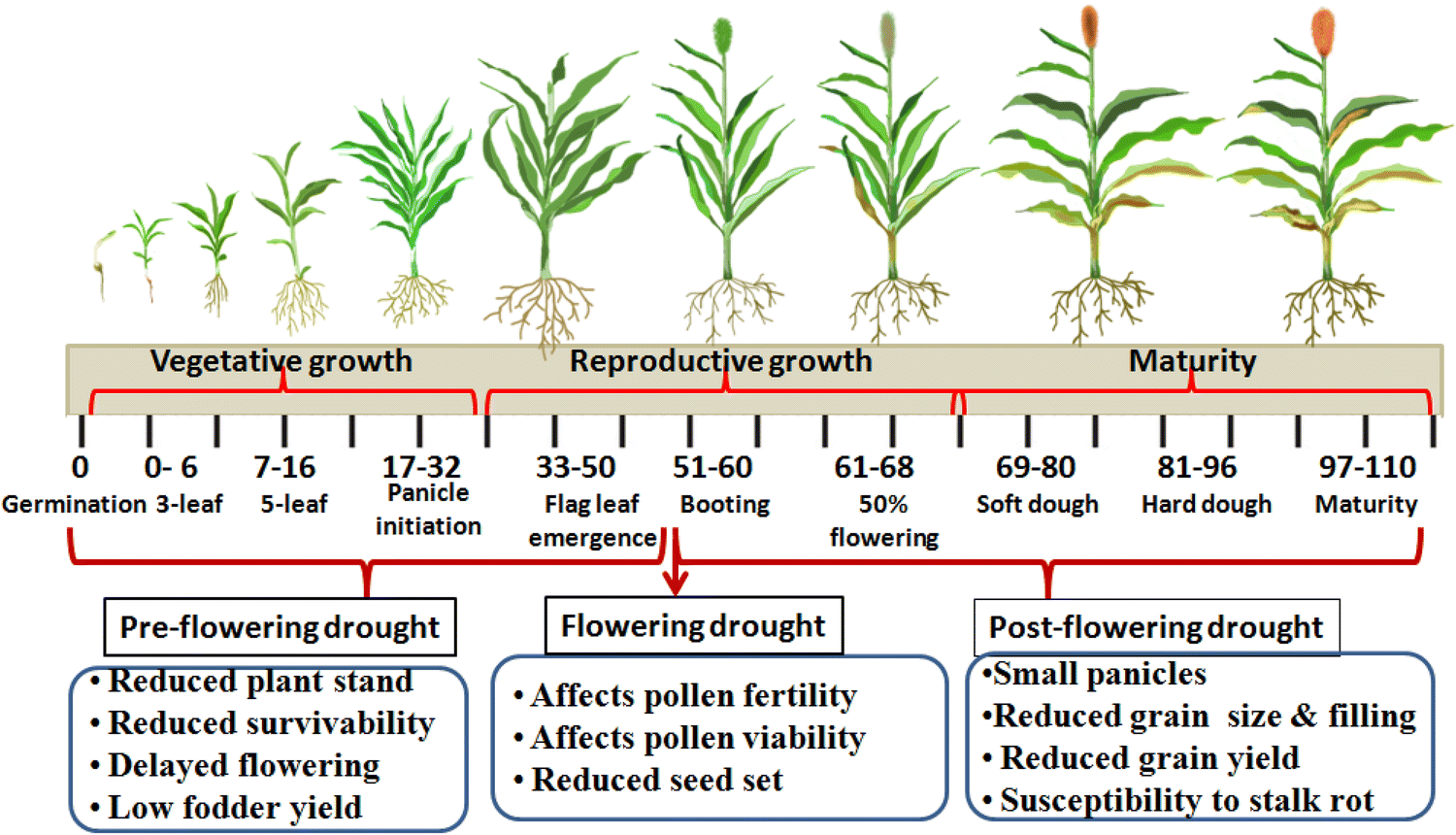What is sorghum plant? Sorghum is one of the species among the twenty-five species of growing flower plants in the grass family. Most of those species are usually grown as cereals for human consumption and some pastures for animals.
There is this one particular species of sorghum that was originally demonstrated in Africa and ever since then spread throughout the globe and that particular species is called the Sorghum Bicor.
All over the world today, sorghum is a food grain for humans. Sorghum is primarily used as a feed grain mostly for livestock in the United State. The feed value of sorghum grain is similar to that of corn, but the sorghum grain has more protein and fat than corn but is lower in vitamin A.
Sorghum is highly acceptable for livestock and intake, the livestock productivity, according to research, shows that some sorghum varieties and hybrids which were developed to deter birds are less acceptable due to tannins and phenolic compounds in the seed.
Normally the sorghum grain should be well cracked or rolled before feeding it to cattle. This helps to improve the portion digested. Sorghum is a grass that is usually similar to corn in vegetative appearance, just that sorghum has more tillers and more finely branched roots than corn.
The development and the growth of sorghum are similar to that of corn and other cereals also. Sorghum seeding is usually smaller than corn due to its smaller seed size.
Read Also: Methods of Controlling High Mat on Plantain

According to research, before 1940 most sorghum grains were five to seven feet tall, which tends to create harvesting problems. Nowadays sorghum has either two or three dwarfing genes in them which are two to four feet tall.
There are several sorghum grain groups, the most current grain sorghum hybrids have been developed by crossing Milo with Kafir. Other groups of sorghum are Hegari, Feterita, Kaoliang, Shallu, and Durra. Sorghum head is usually a panicle with spikelets in pairs.
Sorghums are usually self-fertilized but can cross-pollination. The hybrid sorghum seed is normally produced making use of cytoplasmic male sterility. Also, sorghum flowers usually begin to open and pollinate soon after the panicle has completely emerged from the boot.
Then pollen shedding now begins at the top of the panicle and grows grasses downward for about six to nine days. According to research, pollination usually occurs between 2:00 and 8:00 am and then fertilization takes place six to twelve hours later.
According to research also, a sorghum plant can branch from upper stalk nodes. If drought and heat damage the main panicle, the branches can then beer panicle and produce again. The sorghum seed color of sorghum is variable with yellow, white, brown, and also mixed classes in the grain standards.
Read Also: 16 Hidden Health Benefits of Tomato Seeds

Low temperature may tend to prevent the successful production of grain sorghum in central Northern Wisconsin and Minnesota, sorghum plant should complete heading by early August to ensure excellent grains set.
Low temperature not length of the growing season is usually the limiting factor for the production of sorghum in the upper Midwest. Also, an average temperature of at least 80 Fahrenheit during july is needed for maximum sorghum grain yields and day time temperature of at least 90 Fahrenheit is needed to recognize the key developmental stages of sorghum, it can aid in making critical management decisions.
These stages are usually based on sorghum structures as they tend to develop over the life of the plant. It is widely known that a sorghum plant has ten official stages of growth and development starting with stage zero and ending with the physiological maturity of the sorghum grain at stage 9.
The following are stages involved, which are;
1. Emergence -stage 0
2. Three-leaf- stage 1
3. Five-loaf -stage 2
4. Growing point differentiation -stage 3
5. Flag leaf visible- stage 4
6. Boot- stage 5 (Heading)
7. Flowering -stage 6 (milk)
8. Soft dough- stage 7
9. Hard dough- stage 8
10. Physiological maturity- stage 9
Read Also: Reasons why Jute or Saluyot leaves (Ewedu Soup) is good for you
At stage nine the grain has already achieved its maximum dry weight. Physiological maturity is usually recognized by a dark spot or black layer on the bottom of the kernel. During the vegetative stage of the sorghum plant, the number of leaves is usually used to determine the stage of the plant.

Sorghum leaves are numbered by counting the full expanded leaves that have a well-developed collar, when counting leaves always put in mind that the first leaf is short with a rounded tip.
Then leave it immediately the sorghum has produced approximately five fully expanded leaves then counting can become and even fall of the sorghum plant.
In conclusion, sorghum grows best where summer is quite warm with daytime temperatures regularly topping 90 degrees Fahrenheit as earlier said. Sandy soil in a warm climate is normally good for growing sorghum because it can withstand drought and flooding which tend to be better than corn does.
When choosing the best variety of sorghum to grow or plant, you must first understand the three main sorghum keys which are;
1. Grain sorghum which is also called milo produces a tall panicle covered with small, round seeds in late summer. The grain can be milled into fresh flour, and some varieties such as Tarahumara can then be popped like popcorn.
Read Also: African Salad (Ugba): Health Benefits, Nutrition and Facts
2. Sweet sorghum which is also called cane sorghum is grown for the sweet juice that is extracted from the tall stalks.
3. Broom corn: is a type of sorghum that holds its seed on sturdy straws which are perfect for trimming into brooms.
Sorghum needs warm soil to germinate and grow. In warm climates, sorghum is customarily planted around late May or early June.
Prepare the soil as if you are planting corn and make sure to mix a balanced organic fertilizer into the bed or row before planting. Sorghum is self-fertilized. Therefore a large plot is not needed for pollination purposes, unlike corn.
Sow the sorghum seed one-half inch deep and four inches apart, one thin to eight inches apart when the seeding is four inches tall. Always make sure you keep weeds under control until the developing sorghum plant is big enough to dominate all their spaces.
Make sure you drench sorghum with a high-nitrogen liquid fertilizer to intensify or heighten new growth. This should be done six weeks after planting.
Read Also: How to Properly Dispose Your Home Appliance Wastes





